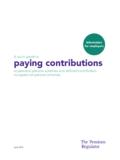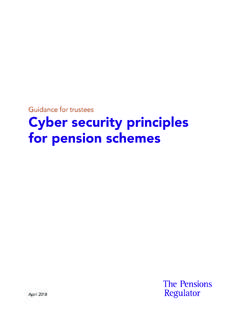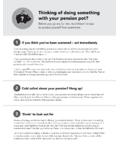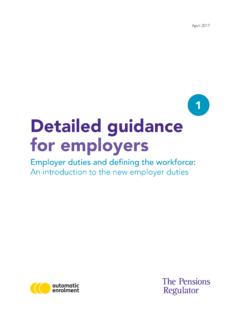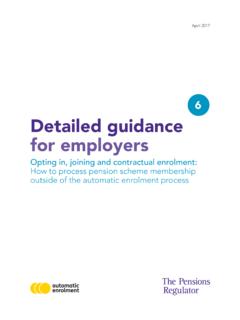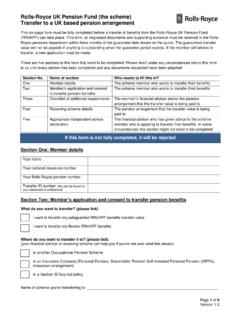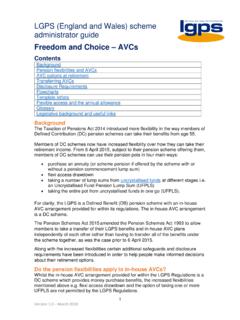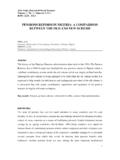Transcription of A quick guide to Regulated Apportionment …
1 Information for journalists A quick guide to Regulated Apportionment Arrangements Key points The best security for a defined benefit pension scheme is a strong, ongoing sponsoring employer. In extreme circumstances, where an employer is at serious risk of inevitable insolvency, this support may no longer be available. In that situation, we will work closely with the employer, trustees and Pension Protection Fund (PPF) to reach the best available outcome in the circumstances. A restructuring mechanism called a Regulated Apportionment arrangement (RAA) is available under pensions law. An RAA is an arrangement which allows a financially troubled employer to detach itself from its liabilities in respect of a defined benefit pension scheme.
2 This will usually result in the scheme's controlled entry into the PPF. Much more unusually, the scheme will be sufficiently funded to buy out members benefits above PPF levels; or members may be offered the opportunity to transfer to a new scheme which offers benefits lower than those of the old scheme, but higher than PPF compensation. RAAs are rare because they involve a sponsoring employer severing its ties with the pension scheme and the alternative would have to be that the employer would become insolvent. As such, we will only consider an RAA if a number of stringent criteria have been met, to avoid them being abused by employers seeking to offload pension liabilities onto the PPF.
3 The PPF also has stringent criteria and must confirm that it has no objection to the RAA. We need to be satisfied that the employer's insolvency is inevitable and that the RAA provides a better outcome for the scheme than could be achieved either through insolvency and/or through our anti-avoidance powers. We also closely examine the circumstances of the wider employer group and the outcome of the proposal for other creditors. We have statutory objectives to protect member benefits and limit calls on the PPF. It is unacceptable for employers to engineer financial distress in order to bring themselves within the scope of an RAA and release themselves from their responsibilities.
4 Such behaviour is likely to be viewed as avoidance and may result in regulatory action by The Pensions Regulator (TPR). In more detail The criteria we consider before determining whether or not to approve an RAA are: whether insolvency of the employer would be otherwise inevitable or whether there could be other solutions which would avoid insolvency whether the scheme might receive more from an insolvency whether a better outcome might be attained for the scheme by other means, including the use of our powers (for example, our anti-avoidance powers) where relevant the position of the remainder of the employer group, where there is a group whether the scheme is being treated equitably compared to other creditors The PPF has its own set of criteria, which are largely similar to ours.
5 They include a requirement that the scheme or the PPF receives equity in the restructured employer. Employers should ensure they discuss any proposal in detail with the trustees. We expect employers, trustees and their advisers to consider all the factors set out above. The RAA application should include all relevant information necessary to allow us to assess the proposal against the RAA criteria. This assessment may take some time to complete, as the facts and issues may be complex, and specialist advice may be required. Neither TPR nor the PPF will agree to such arrangements lightly. RAAs create value for shareholders at the expense of members and, through the PPF levy, other schemes .
6 How does an RAA work? RAAs involve the link between the sponsoring employer and pension scheme being severed, which means that the liabilities of the scheme will normally pass to the pensions lifeboat, the PPF. Because of this, RAAs will only be appropriate in rare circumstances, where a stringent set of criteria are met. The Pensions Regulator April 2017 A quick guide to RAAs 2.
